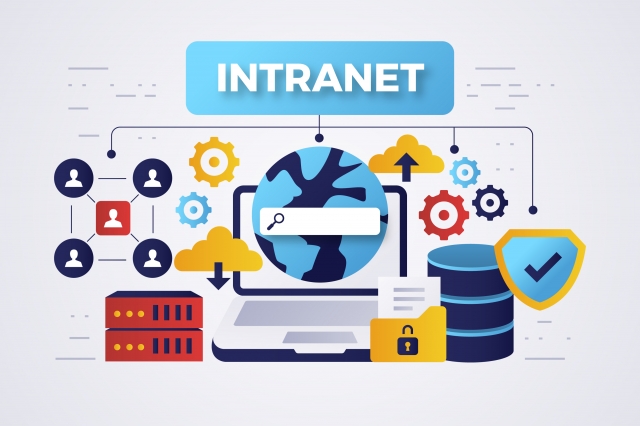For years, VPN stacks have been the go-to solution for enabling remote access and protecting business networks. But as companies shift to the cloud and support a hybrid workforce, traditional VPNs are falling short. They are challenging to scale, expensive to maintain, and often slow, creating performance issues and security gaps. For Managed Service Providers (MSPs), this results in an increase in support tickets, higher operational costs, and frustrated clients.
That is where Cloud Firewalls and Zero Trust Network Access come in. These modern, cloud-native solutions are designed for today's distributed environments. They offer secure, seamless access, reduce complexity, and allow MSPs to manage everything from a single dashboard. More importantly, they help MSPs deliver stronger protection and a better user experience without the headaches associated with legacy systems.
In this blog, we will explore the problems with traditional VPN stacks, Cloud Firewalls, and ZTNA and explain how cloud firewalls and ZTNA simplify MSP operations.
The Problem with Traditional VPN Stacks
-
Legacy Systems Aren't Built for the Cloud
Traditional VPNs were created when most people did their work in the office. Back then, users connected to company servers from one central location. However, today, employees work from home, on the go, and in various regions, utilizing cloud-based apps such as Microsoft 365 or Google Drive. VPNs struggle in this setup because they were not built for the flexibility and scale that modern businesses now need.
-
Complex Configurations and Management Overhead
Setting up and maintaining VPNs requires a significant amount of time and effort. MSPs must install hardware, manage software updates, set user permissions, and resolve any issues that may arise. For every new client, location, or user, it becomes even more complicated. This slows things down and increases the chances of mistakes or security gaps. It is a lot of work for something that should be simple.
What Is a Cloud Firewall?
A cloud firewall is a security tool that protects networks, users, and data without needing physical equipment. It runs in the cloud and filters internet traffic to block threats before they reach devices. For MSPs, it offers a more straightforward setup, automatic updates, and centralized control across multiple clients and locations.
What Is Zero Trust Network Access (ZTNA)?
Zero Trust Network Access (ZTNA) is a security approach. It allows users to access specific applications only after confirming their identity and the security of their devices. Unlike VPNs, ZTNA does not trust by default. It limits access to what each user needs, improving security and reducing the risk of unauthorized entry or data breaches.
How Cloud Firewall and ZTNA Simplify MSP Operations
-
Simplified Network Architecture
Managing firewalls, VPN servers, and access gateways at various client locations requires a lot of time and effort. Cloud firewalls and ZTNA remove the need for those complicated setups. Everything is managed from a single dashboard.
There is no need to worry about physical devices or scattered security rules. It becomes easier to set up, monitor, and control the network across offices, remote workers, and cloud environments without having to juggle multiple tools.
-
Enhanced Security Posture
ZTNA ensures that users only access the specific apps or services for which they are approved. It does not give full network access like a VPN. Each request is checked for identity, device health, and other factors before being allowed.
This reduces the chances of attackers moving freely through the network if they get in. Cloud firewalls also filter traffic and block threats before they can cause harm. Combined, they provide tighter control and reduce security risks across all clients.
-
Scalable and Cloud-Native by Design
Cloud-based tools grow with the business. There is no need to upgrade hardware when more users join or traffic increases. Whether a client adds a new office or transitions to a fully remote team, the same security setup remains effective.
Everything runs in the cloud, so there is no need to plan capacity or install new boxes. It saves time and makes it easy to support growing clients without requiring changes to the setup.
-
Reduces Complexity in Remote Access
Setting up remote access with VPNs can be time-consuming and often leads to user issues. With ZTNA, users login and connect to just the applications they need.
They do not access the whole network, which keeps things more secure. There is no need to set up or troubleshoot VPN clients. For MSPs, this means fewer support calls and quicker rollouts. Remote users can work from anywhere with a stable and secure connection that works.
-
Improves Threat Detection and Response
Cloud firewalls come with built-in monitoring and reporting tools. They show which apps users access, where traffic is coming from, and when something looks suspicious.
MSPs can identify problems early without needing to dig through logs or rely on client-side tools. With everything in one place, it's easier to track activity and respond quickly. ZTNA also helps by logging every access request so MSPs know exactly who connected and what they did.
-
Streamlines Onboarding and Offboarding
Adding a new user or removing someone who is no longer working with a client should be quick and safe. With identity-based access, MSPs can connect security policies directly to user accounts.
Once a person is removed from the company directory, their access is instantly blocked. No manual revoking or hunting down forgotten credentials. This helps prevent data leaks and saves time during employee changes.
-
Automated Updates and Reduced Downtime
Manual updates are time-consuming and can be easily missed. Cloud firewall and ZTNA platforms update automatically. Security patches, new features, and policy improvements are pushed without requiring downtime or action from MSPs.
Clients stay protected without waiting for maintenance windows. This reduces risk and ensures the latest protections are always in place, even across multiple client networks.
4 Operational Benefits of Replacing VPN for MSPs
-
Lower Infrastructure and Maintenance Costs
VPNs often require physical devices, software licenses, and regular upkeep. Replacing them with cloud-based tools means MSPs no longer have to buy or maintain hardware. Everything is managed online, which reduces costs and saves time.
-
Fewer Support Tickets and User Complaints
VPNs are often criticized for their slow speeds, frequent connection drops, and complex setup processes. Cloud Firewall and ZTNA offer faster, more reliable access with fewer issues. This leads to fewer calls from clients and more time for MSPs to focus on meaningful work.
-
Flexible Service Packaging and Pricing
With cloud-based tools, MSPs can create different service options to match each client's needs. Whether it's a small business or a growing company, services can be scaled and priced accordingly. This helps attract more clients and keep existing ones happy.
-
Stronger Competitive Positioning
Managed Service Providers (MSPs) distinguish themselves in the market by providing modern security solutions. Clients recognize the value in faster access, enhanced protection, and a more seamless experience. This builds trust and gives MSPs an edge over those still using outdated VPN systems.
The Bottom Line
Replacing outdated VPN stacks with cloud firewalls and ZTNA provides MSPs with a more innovative and simplified way to deliver secure access and manage client networks. These modern solutions eliminate the complexity of hardware, minimize support issues, and offer stronger security tailored for today's cloud-driven world. By making the switch, MSPs can work more efficiently, reduce costs, and provide a better experience to clients, all while staying ahead of evolving technology demands.






